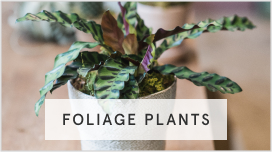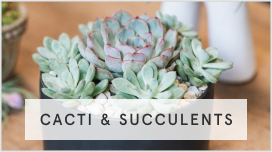The Art of Keeping Orchids Alive

The Art of Keeping Orchids Alive
Orchids are spectacular flowering plants with delicate blooms that feature an exotic appeal. In nature, orchids are found around the globe growing among rocks, trees, and even the jungle floor.
With their stunning, exquisite beauty, it is no wonder that many people choose to keep an orchid in their home or office. Whether you just received an orchid as a gift, or you are thinking of adding an orchid to your plant collection, one of the number one concerns people have when welcoming an orchid into their life is how to keep it alive.
While orchids have earned a reputation for being difficult to care for, the reality is they are simple in their needs. Orchids are, however, quite different from your average house plant, which is why many plant lovers are left uncertain of how to best care for these unique plants.
In this guide, we’ll take a look at the art of keeping orchids alive, starting with the unique qualities of this ethereal plant.
Understanding the Qualities of your Orchid
The orchid family is a diverse one, with over 20,000 different types. In most cases, the orchids found in your local nursery or delivered to your home are phalaenopsis hybrids.
While orchids may appear to be just another potted plant, in nature, orchids are not found living in the ground in the same manner as most plants, but rather, many are epiphytes — a type of plant that hangs onto trees for support, suspending its roots in the air. Other varieties of orchids are lithophytes, which grow among rocks, and a few types of orchids are terrestrials, growing in the loamy organic matter among the floors of tropical jungles.
It is this unique style of growth that makes orchids vastly different from your average houseplant. When planted in a pot of soil, an orchid will suffer. Their roots need to breathe to stay healthy. Additionally, orchids have unique needs when it comes to the food they eat. In nature, when suspended in the air off of trees or nestled among the crags of rocks, they pick up organic matter brought in from winds and rain. Mimicking this unique food source is critical when caring for an orchid in your home.
Caring for your orchid can be broken down into two main segments of the plant’s life cycle.
When Your Orchid is Blooming
In most cases, when you purchase an orchid or one is delivered to your door, the orchid will be in full bloom. After all, it is their stunning blooms that have earned orchids a treasured place in the hearts of many flower lovers.
When an orchid is blooming, the following four steps will help you keep your orchid healthy and happy.
1. Place in the right lighting and temperature
Different orchid varieties have different light needs, but in most cases, your orchid will do best in an area where it receives ample indirect sunlight. Avoid bright window sills, which deliver too much direct sunlight, and dark, dimly lit rooms where your orchid can’t receive natural sunlight at all.
Opt for an area in the home where the temperature will remain above 50 degrees Fahrenheit but won’t rise above 85. If necessary, you can add a small heating lamp to the area during the winter months. When summer is in full swing, be sure to move your orchid away from any areas of the home that become excessively hot.
2. Keep it in the right humidity
Orchids thrive in humid environments, which is why you usually find them in nature in dense jungles and rich tropical areas. In your home, try to keep your orchid in a room where the humidity will remain between 50 to 70%.
If you live in a dry, arid climate, this can be a challenge. In this case, consider keeping your orchid in a bathroom or kitchen where the humidity may remain higher than the rest of the house. Make sure that if you choose one of these locations, the room still receives ample sunlight. You can also place a shallow saucer with water and rocks next to your orchid to help keep humidity levels high enough.
3. Make sure it's in the right potting medium
Orchids do not naturally grow in dense soil, which is why it is important to ensure that your orchid is residing in the right potting medium. Orchids are often potted in a mix of moss and bark. This medium allows the roots to breathe and creates the right acidic balance for your plant.
If you receive an orchid as a gift and notice that it has been potted in normal potting soil, wait for it to reach dormancy and repot the plan with orchid-specific potting materials.
4. Water it minimally
While orchids prefer a humid climate, they do not need to be watered frequently. In fact, overwatering can cause your orchid to rot. In general, you should water your orchid once a week or every other week, depending on the humidity where you live. Check the potting medium with your finger. If it is still damp, it is not time to water your orchid. Wait until the medium is dry before providing a little water.
After Your Orchid is Done Blooming
Feed your orchid
Orchids in nature find ample nutrients from organic matter. When an orchid is potted, it is important to provide it with these nutrients on an ongoing basis. This will help keep your orchid healthy and will contribute to future blooms. Use an orchid-specific fertilizer and feed your orchid every other week after it has finished blooming.
Repot your orchid
Every one to two years, you will want to take the time to repot your orchid. Repotting your orchid will ensure that it has ample space for root growth. Be sure to choose a new pot that will keep the roots from becoming cramped.
Repotting is also important as, over time, the potting medium will break down, turning into compact soil, which is not ideal for the plant’s roots. Check your orchid’s potting medium when it is no longer in bloom. If the moss and bark have broken down into a soil-like consistency, it is time to repot the orchid.
Common Signs Your Orchid Needs Extra TLC
Even if you take good care of your orchid, there are cases where it might need a little extra love and attention. If you notice any of the following signs, take the necessary steps to keep your orchid healthy and happy.
● Root rot: One of the most common issues orchids face is root rot. Because orchids are not naturally found in confined spaces, such as a pot, their roots are not accustomed to being trapped in too much moisture or compacted materials. Root rot can lead to dropping leaves, a lack of blooming, and an unhealthy plant stalk. Carefully dig out some of the potting material around your orchid’s roots and look for black, mushy roots. If you notice that the roots are rotting, remove your orchid from its pot. Carefully tap off the potting material from the roots and trim off roots that have gone bad. Treat the remaining roots with fungicide and allow the roots to dry out before repotting.
● Leaf scorch: Your orchid’s leaves should be a rich, vibrant green. If they are turning yellow or are dried out, you may be exposing your orchid to too much direct sunlight. Try moving your orchid to a cooler area with indirect sunlight.
● Tightly tangled roots: Orchids should feature loosely tangled roots. When the roots become too closely tangled, it is a sign that the pot is not providing ample space for your orchid. At this point, you may want to consider repotting the orchid during its next dormancy cycle.
● Pest infestation: Just like other houseplants, orchids are susceptible to common pests, such as aphids, mealybugs, mites, gnats, and whiteflies. If you notice these pests, remove the pests immediately and consider using an organic pesticide. Be sure to check other plants in the house as well, as many pests will move from plant to plant in the home.
Welcome an Orchid into Your Home
Do you want to add the exotic, natural beauty of an orchid to your home? Shop our collection of these beautiful blooming plants, or consider sending an orchid to someone you love. Orchids make an excellent choice as a gift for family, friends, or colleagues. And, with the right amount of care, these unique flowers can continue to add lasting beauty to any office or home.












